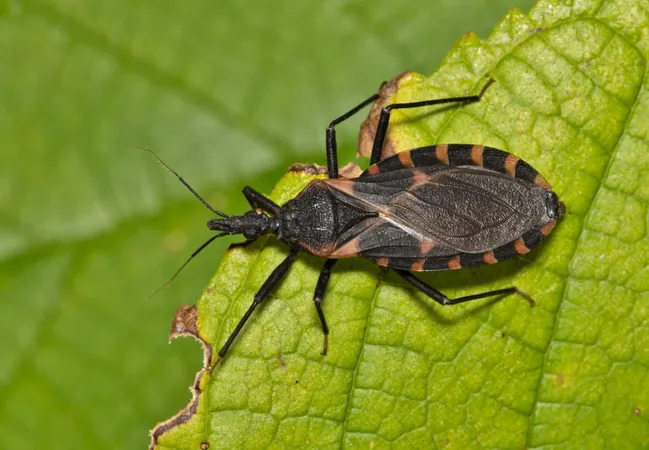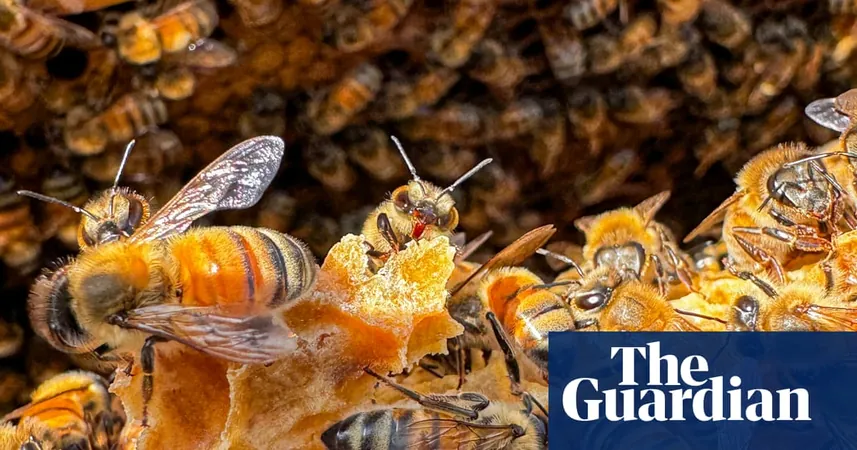
A Deadly Embrace: Chagas Disease is Taking Root in the U.S.!
2025-09-09
Author: Liam
Chagas Disease: A Threat in the Land of Opportunity
Once thought to be a tropical disease confined to Central and South America, Chagas disease is now alarming public health officials as it becomes endemic in the United States. A recent report from the Centers for Disease Control and Prevention (CDC) has catalyzed calls for official recognition of this infectious disease as part of America's health landscape.
Uncovered: How Chagas Disease Spreads
Chagas disease, also known as American trypanosomiasis, is triggered by the Trypanosoma cruzi parasite. Its primary means of transmission is through triatomine insects, infamously known as "kissing bugs"—aptly named for their tendency to bite unsuspecting victims around the face while they sleep. The real danger lies in the fact that these bugs defecate near the bite site, and the parasite enters the body when contaminated feces are unwittingly rubbed into the wound or mucous membranes.
But that's not all! Chagas can also hitch a ride through blood transfusions, organ transplants, and even from mother to child during childbirth. In an effort to combat this growing concern, U.S. blood and organ donors have been screened for Chagas since 2006.
Recent studies indicate that the parasite has infiltrated American wildlife and domestic animals, culminating in local human infections being reported in eight states, particularly in Texas. Despite the rising numbers, the true prevalence of Chagas disease remains shrouded in mystery due to limited testing.
Recognizing the Symptoms: The Silent Threat
Chagas disease manifests in two distinct phases: acute and chronic. During the acute phase, which can last weeks to months, symptoms may be mild and flu-like: fever, fatigue, body aches, and headaches are common. Some people might even notice swelling around the eyes, known as Romaña's sign. However, many remain symptom-free during this pivotal window when treatment is most effective.
Without intervention, Chagas progresses to a chronic phase, remaining silent for years or even decades before wreaking havoc. Nearly 30% of those infected may eventually face severe cardiac issues, including heart disease and arrhythmias. Early diagnosis is crucial: identifying symptoms and risk factors can guide healthcare providers in administering appropriate lab tests.
The Race Against Time: Diagnosis and Treatment
Diagnosis isn't straightforward, as it requires a nuanced assessment along with laboratory testing tailored to each phase of the disease. For acute infections, a blood smear might reveal the lurking parasite. In chronic cases, testing for specific antibodies becomes essential.
The good news? Two medications—benznidazole and nifurtimox—have been shown to be highly effective, particularly when administered during the acute phase, boasting cure rates above 90%. However, their efficacy diminishes in the chronic phase. For newborns diagnosed with congenital cases, early treatment is vital and significantly improves outcomes.
Stay Safe: Prevention is Key
Combatting Chagas disease means arming yourself with knowledge and taking preventive action. If you live in or are traveling to regions inhabited by kissing bugs, it’s crucial to take key precautions: seal up your home against these pests, use insecticides, and install screens on windows.
Headed for the great outdoors? Opt for insecticide-treated bed nets and avoid sleeping directly on the ground. Remember, if you encounter a kissing bug, don’t crush it with your bare hands!
For those at heightened risk, particularly residents or travelers from endemic areas, regular screenings are recommended. Pregnant women must be particularly vigilant to safeguard against mother-to-child transmission.
A Call to Action: Awareness is Critical
As Chagas disease gains a foothold in the United States, raising awareness is more crucial than ever. Public health officials, healthcare providers, and the general public must unite to recognize, diagnose, and treat this once-overlooked tropical disease before it imposes devastating, long-term health consequences. The time to act is now!









 Brasil (PT)
Brasil (PT)
 Canada (EN)
Canada (EN)
 Chile (ES)
Chile (ES)
 Česko (CS)
Česko (CS)
 대한민국 (KO)
대한민국 (KO)
 España (ES)
España (ES)
 France (FR)
France (FR)
 Hong Kong (EN)
Hong Kong (EN)
 Italia (IT)
Italia (IT)
 日本 (JA)
日本 (JA)
 Magyarország (HU)
Magyarország (HU)
 Norge (NO)
Norge (NO)
 Polska (PL)
Polska (PL)
 Schweiz (DE)
Schweiz (DE)
 Singapore (EN)
Singapore (EN)
 Sverige (SV)
Sverige (SV)
 Suomi (FI)
Suomi (FI)
 Türkiye (TR)
Türkiye (TR)
 الإمارات العربية المتحدة (AR)
الإمارات العربية المتحدة (AR)